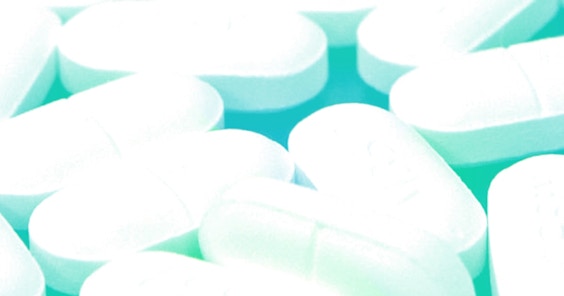I Am Sober is a free app that helps you get some control back in your life.

What is Tramadol?
Last Updated: Fri, January 19, 2024There are many analgesics, or pain killers, available on the market today from acetaminophen to oxycontin. However, all analgesics have different strengths, which is why some are only available with a prescription. Tramadol is one of these such analgesics. While it may not be as common as opiates like oxycontin, it is extremely powerful and potentially addictive. As more time goes on, the opiate crisis in the United States- and around the world- is increasing in intensity and so is tramadol use. Over 3 million Americans have used tramadol in their lifetimes for a non-medical reason. In 2011, before Tramadol was labeled a controlled substance, it caused 20,000 ER visits in the United States and 379 overdose deaths in Florida alone. Unfortunately, tramadol addiction continues to be a prevalent problem in countries around the world.
What are brand or other names for tramadol?
Tramadol is the most-used and generic form of the drug. However, it is also known as Ultram, Conzip, Rybix ODT and Ultram ER. Ultracet, another popular analgesic, is a combination of tramadol and acetaminophen.
Is tramadol an opioid?
Yes, tramadol is an opioid analgesic. It is synthetically made as opposed to naturally-sourced like some other opioids, but it functions in the same way as an opioid- for the most part. Opioids reduce pain by activating opioid receptors in your brain, which prohibits these receptors from receiving pain signals from your central nervous system. Tramadol functions in this way, but it also prohibits serotonin and norepinephrine. Essentially, this means that your body receives an excess amount of these neurotransmitters.
What is a tramadol high like?
A tramadol high is similar to a typical opioid high. Although the purpose of tramadol is to ease pain, this can also occur along with feelings of intense euphoria and weightlessness. However, tramadol is unique from opioids in that it also increases serotonin and norepinephrine, which intensifies a tramadol high and causes feelings of relaxation, warmth and extreme well-being.
What are the side effects of tramadol?
While some do not experience negative side effects when taking tramadol, others can suffer from dangerous side effects. Some of these potential side effects include:
-
Difficulty breathing
-
Chest pains
-
Drowsiness
-
Swelling
-
Seizures
-
Indigestion
-
Insomnia
-
Increased agitation
-
Sweating
-
Vomiting
-
Itching
While these are symptoms that can occur as a result of using the drug, there are several other tramadol withdrawal side effects that can occur as a result of someone dependent on the drug quitting.
Is tramadol addictive?
Yes, tramadol can be extremely addictive. As with any opiate, there is a high chance that tramadol can be abused. In addition to being an opiate, the unique high that tramadol provides by increasing the amounts of serotonin and norepinephrine in your system make it even more addictive. However, it’s important to note that not everyone will become addicted to tramadol. Those who are particularly susceptible to addictive or dependent tendencies should be very wary about using the drug, though, because they are at the highest risk of developing an addiction to the substance.
What is a typical dosage / how much is an overdose?
There is no one tramadol dosage that is the standard. The amount of tramadol that you are prescribed will depend heavily on your doctor’s philosophy, the amount of pain you’re in, your susceptibility to addiction, and whether you have any other health conditions. Doctors typically prescribe a lower dose and work their way up to a dose that works best for you without causing any adverse side effects. On average, doctors will begin by prescribing a 25mg tramadol tablet once daily and can increase this amount all the way to 200mg per day. However, for some people with other health conditions- such as liver damage- shouldn’t exceed more than 100mg per day. Source.
Any dosage above 200mg should be taken with extreme caution, but ingesting more than 400mg of tramadol will almost certainly lead to an overdose. However, it’s important to remember that everyone’s body absorbs tramadol differently. For example, a heavier man may be able to take a higher dose of tramadol with no side effects, while a skinny, young girl could overdose from the same amount. Height, weight, build, and tolerance are all things that should be taken into consideration when seeking to take tramadol safely.
How do I know if someone took tramadol?
There are some people that are able to take tramadol, as prescribed by a doctor for pain, without developing a dependence on the drug. If someone is taking a healthy dose of tramadol for pain, they may not exhibit any symptoms- especially if they are on a low dose. While you may not know if someone took tramadol, you can certainly tell if someone is dependent on the drug. If someone is dependent on tramadol, you may notice them exhibiting some of these behaviors:
-
A refusal to stop using the drug
-
A desire to prioritize the drug over everything else
-
Increasing their tramadol dose
-
Withdrawal symptoms such as: numbness, depression, agitation, hallucination and paranoia.
Will it show up on a drug test?
Yes. Tramadol, like all opiates, will show up on a drug test. Depending on which type of drug test you are subjected to and when the last time you took tramadol was, the drug may or may not show up on your drug test. Whether it shows up on your drug test also depends on how much tramadol you took and in which form (tablet or extended-release capsule). As a general rule, tramadol will show up on saliva and blood tests up to 24 hours after taking the drug, on urine tests up to 40 hours after taking the drug and on hair tests up to 90 days after taking the drug. How long the drug stays in your system also depends on a variety of factors like your weight, height, basal metabolic rate and more.
Tramadol has only been around for a few decades now, as it was FDA approved in 1995, but it continues to be a very popular opiate analgesic. Unfortunately, the way that it affects the body can make it a dangerous drug for many people. If you have begun taking tramadol and are experiencing any of these side effects or a full-blown tramadol addiction, seek help right away. The sooner you get clean, the easier your life will become.
I Am Sober is a free app that helps you get some control back in your life.




